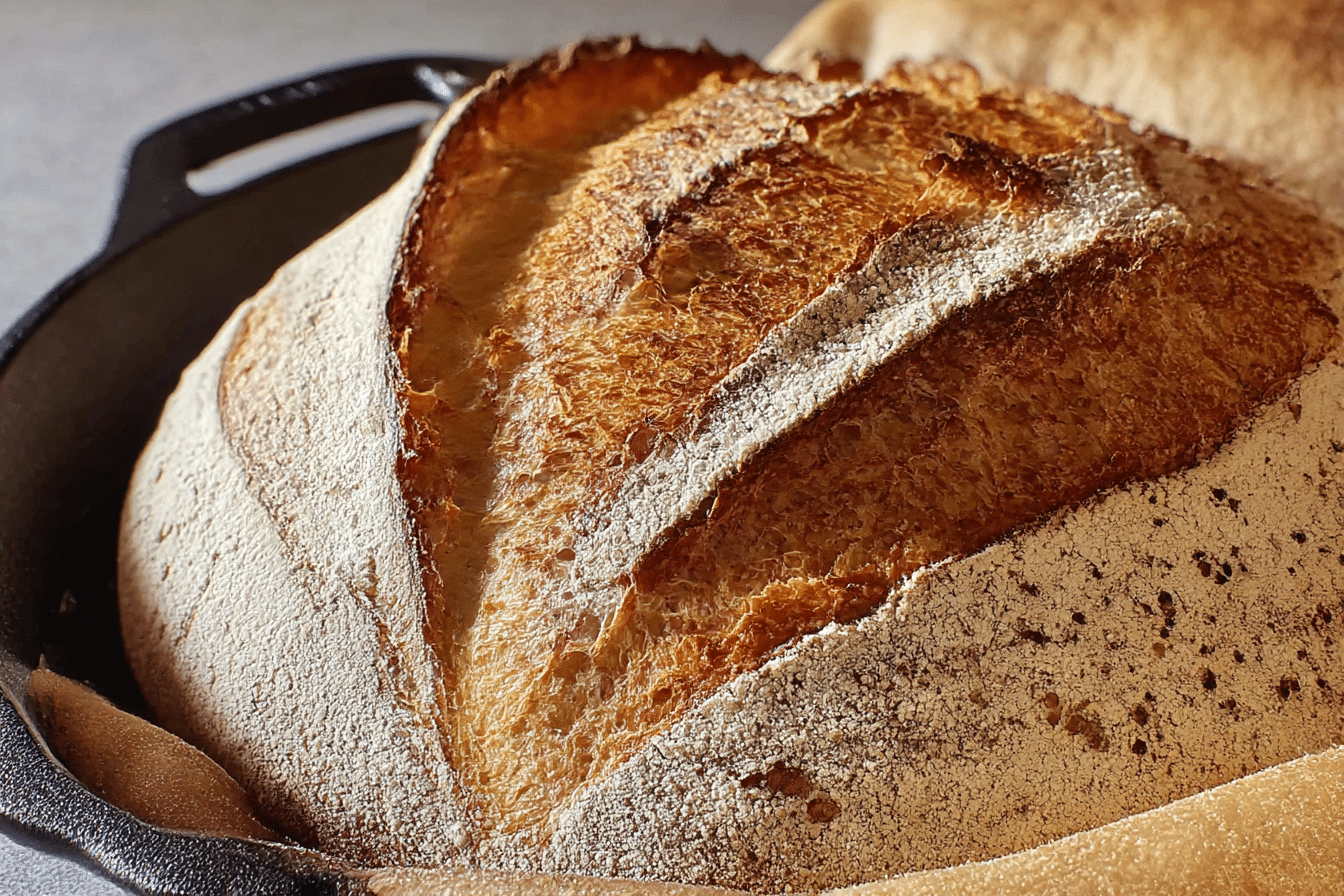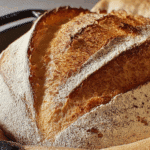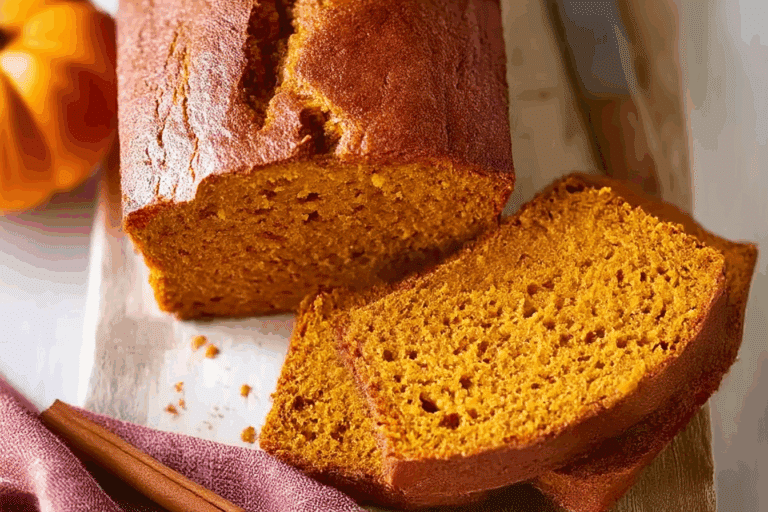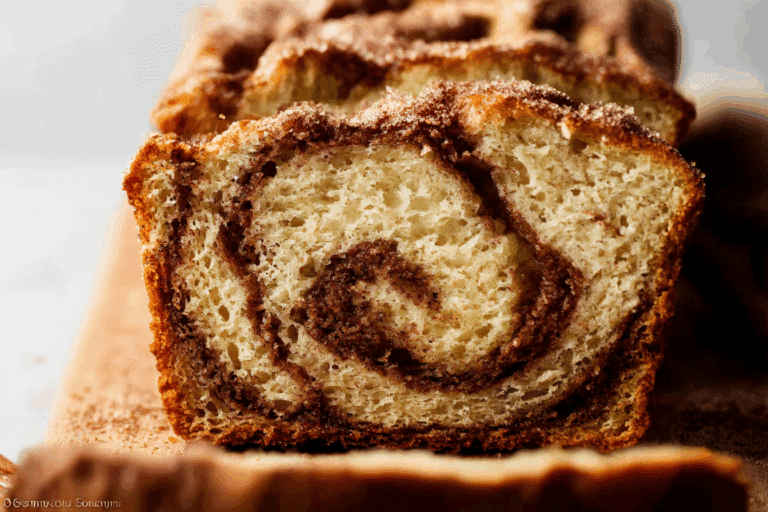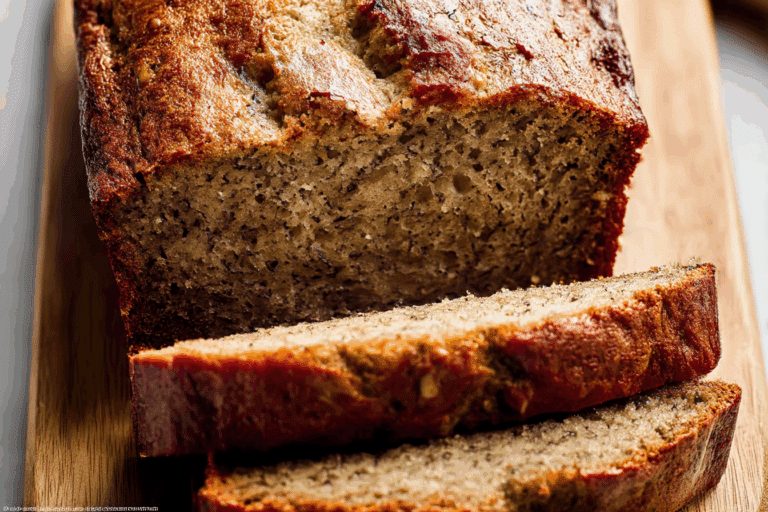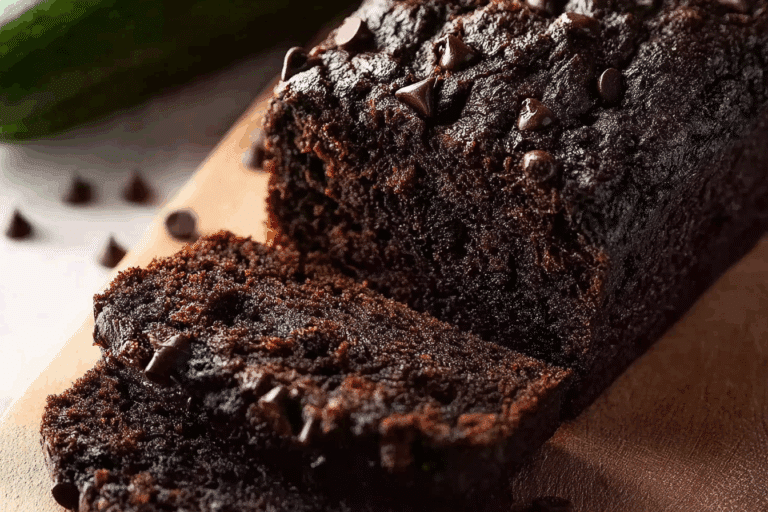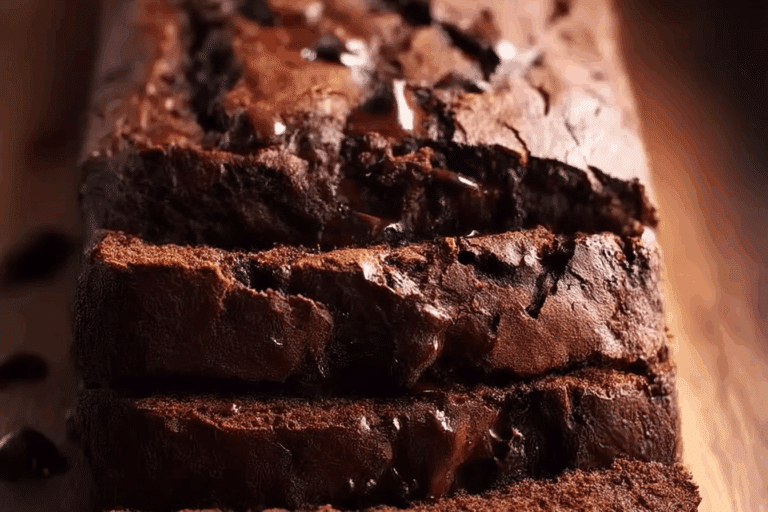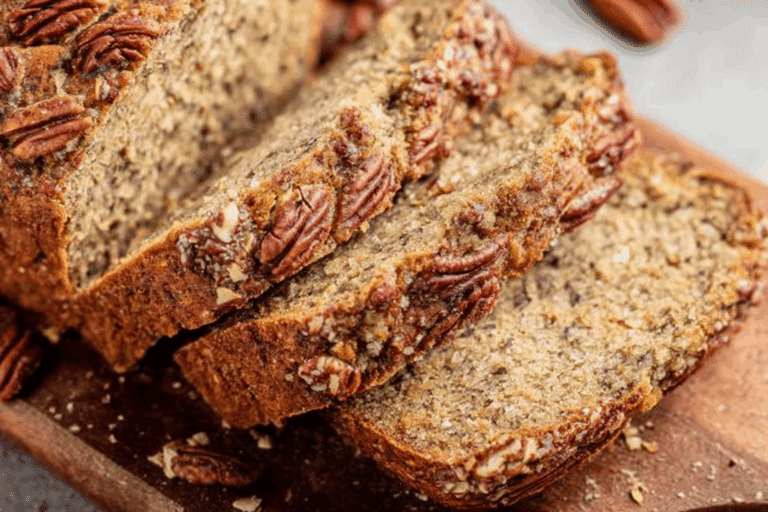Sourdough Bread
Few things are as satisfying as pulling a golden loaf of sourdough bread out of the oven. The crackling crust, the chewy interior filled with airy pockets, and the tangy aroma that fills the kitchen make it feel like a small triumph every time. This bread is rustic, hearty, and deeply rewarding, the kind of loaf you proudly slice into and share. Trust me, this one’s worth the wait.
Behind the Recipe
My love affair with sourdough began on a quiet weekend when I decided to nurture a starter and see where it led me. The process felt almost magical, like caring for a living thing that, in turn, gave me something delicious. Each time I baked a loaf, it became less about just bread and more about connection, patience, and tradition. That first crackling crust still lingers in my memory as one of my proudest kitchen moments.
Recipe Origin or Trivia
Sourdough is one of the oldest forms of leavened bread, dating back thousands of years to ancient Egypt. Bakers relied on wild yeast and naturally occurring bacteria to make bread rise long before commercial yeast existed. Its distinct tang comes from lactic acid produced by fermentation, and it has remained beloved around the world for its unique flavor, texture, and long shelf life. Even today, sourdough holds a special place as both a nod to tradition and a staple in modern artisan baking.
Why You’ll Love Sourdough Bread
This bread is a little bit of magic in every slice, and here’s why it will win your heart.
Versatile: Perfect for sandwiches, toast, or simply enjoying with butter.
Budget-Friendly: Flour, water, and salt create bakery-quality bread at home.
Quick and Easy: While fermentation takes time, the hands-on work is minimal.
Customizable: Adjust hydration, add seeds, or mix in herbs for variety.
Crowd-Pleasing: That crackly crust and chewy tang win everyone over.
Make-Ahead Friendly: The dough can rest overnight, making it flexible to your schedule.
Great for Leftovers: Stays fresh longer than many breads, and even slightly stale slices make excellent toast or croutons.
Sourdough Bread
A rustic, tangy, and chewy sourdough bread with a golden, crackly crust and soft open crumb—perfect for toasting, sandwiches, or simply enjoying warm with butter.
- Prep Time: 30 minutes (active)
- Cook Time: 45 minutes
- Total Time: 18 hours (including fermentation and proofing)
- Yield: 1 loaf (12 servings)
- Category: Bread
- Method: Baking
- Cuisine: Global
- Diet: Vegetarian
Ingredients
- Bread Flour: 500g – Provides strong gluten structure for an airy crumb.
- Water: 350g – Hydrates the dough and activates fermentation.
- Sourdough Starter: 100g – The natural leavening agent, active and bubbly.
- Salt: 10g – Enhances flavor and strengthens gluten.
Instructions
- Preheat Your Equipment: Place your Dutch oven inside the oven and preheat to 475°F (245°C) about 45 minutes before baking.
- Combine Ingredients: In a large bowl, mix the flour and water until just combined. Let it rest for 30 minutes (autolyse). Add the starter and salt, and mix until incorporated.
- Prepare Your Cooking Vessel: Line a proofing basket with a clean kitchen towel and lightly flour it. If using a banneton, rice flour works best to prevent sticking.
- Assemble the Dish: Perform a series of stretch-and-folds every 30 minutes over 2 hours. Then shape the dough into a tight round and place it in the basket seam-side up.
- Cook to Perfection: Cover and refrigerate overnight (8–12 hours). The next day, transfer the dough to parchment, score the top, and bake in the Dutch oven covered for 20 minutes, then uncovered for 25 more.
- Finishing Touches: Cool on a wire rack for at least an hour before slicing. This helps the crumb set and the flavors to bloom.
- Serve and Enjoy: Slice with a serrated knife and serve warm with butter, olive oil, or your favorite toppings.
Notes
- Use a digital scale: Precision matters for hydration and consistency.
- Cold proof overnight: Enhances flavor and makes shaping easier.
- Let cool before slicing: Prevents gummy texture and allows crumb to set.
- Try different scoring patterns: Adds visual flair and helps control oven spring.
Nutrition
- Serving Size: 1 slice
- Calories: 180
- Sugar: 0g
- Sodium: 190mg
- Fat: 0.5g
- Saturated Fat: 0g
- Unsaturated Fat: 0.5g
- Trans Fat: 0g
- Carbohydrates: 37g
- Fiber: 2g
- Protein: 6g
- Cholesterol: 0mg
Keywords: sourdough, artisan bread, rustic bread, homemade sourdough, no yeast bread
Chef’s Pro Tips for Perfect Results
Sourdough is a labor of love, but these tips make the journey smoother:
- Feed your starter regularly so it’s active and bubbly before baking.
- Use a kitchen scale for accurate measurements and consistent results.
- Score the dough with a sharp blade to control how it expands in the oven.
- Bake with steam to encourage a glossy, crisp crust.
- Let the bread cool fully before slicing to preserve the crumb structure.
Kitchen Tools You’ll Need
Sourdough requires patience more than gadgets, but a few tools help bring out the best in your loaf.
Digital Kitchen Scale: Ensures precise ingredient ratios.
Mixing Bowl: For combining and fermenting the dough.
Bench Scraper: Helps shape and move sticky dough.
Proofing Basket (Banneton): Supports the dough while it rises.
Dutch Oven: Creates steam for that signature crust.
Lame or Sharp Knife: For scoring the dough before baking.
Ingredients in Sourdough Bread
Just a few humble ingredients come together to create something truly extraordinary.
- Active Sourdough Starter: 100 grams, bubbly and fed – provides natural yeast and tangy flavor.
- Bread Flour: 500 grams – gives strength and structure to the loaf.
- Water: 350 grams, lukewarm – hydrates the flour and activates fermentation.
- Salt: 10 grams – enhances flavor and strengthens gluten.
Ingredient Substitutions
If you’re short on something, here are simple swaps:
Bread Flour: All-purpose flour, though the loaf may be less chewy.
Water: Filtered water for better fermentation.
Salt: Sea salt or kosher salt.
Starter: Rye starter for deeper flavor.
Ingredient Spotlight
Active Sourdough Starter: This is the heart of sourdough bread, a living culture of wild yeast and bacteria that makes the dough rise and creates its signature tang.
Bread Flour: With higher protein than all-purpose, it ensures strong gluten development and a chewy, airy crumb.
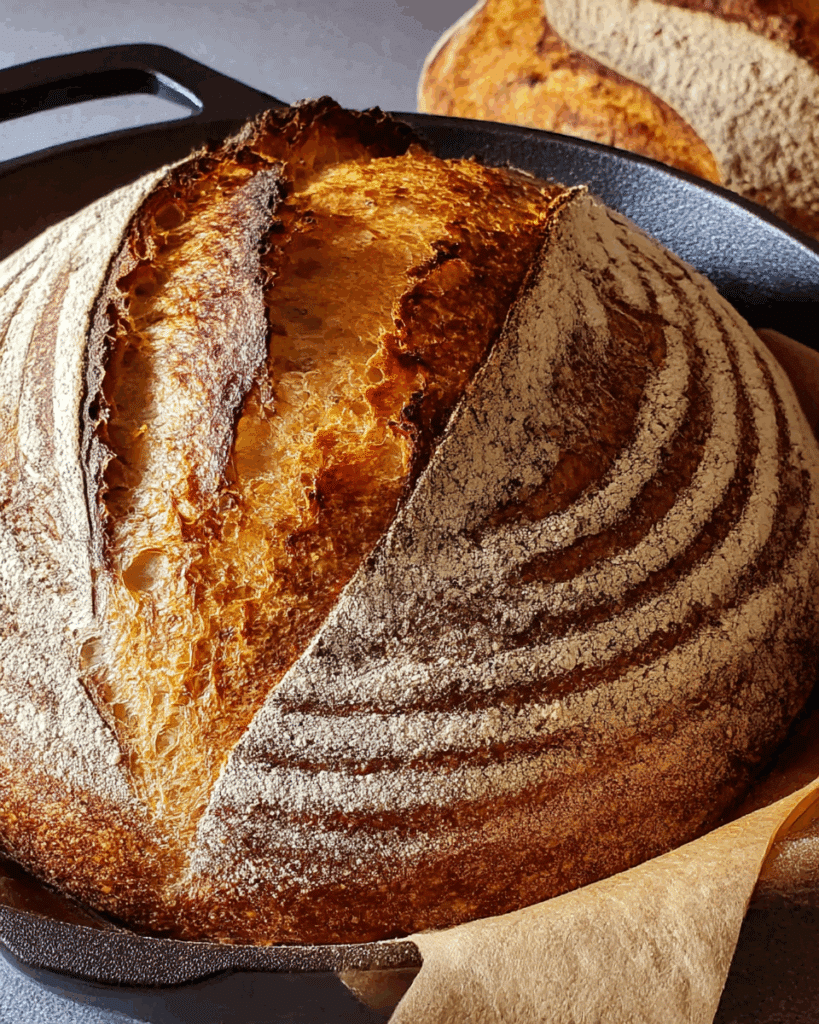
Instructions for Making Sourdough Bread
The process is slow and gentle, rewarding patience with incredible flavor and texture.
1. Preheat Your Equipment:
Make sure your Dutch oven is ready for baking. Preheat oven to 475°F (245°C) before the final bake.
2. Combine Ingredients:
In a mixing bowl, mix the sourdough starter, bread flour, water, and salt until a shaggy dough forms. Cover and rest for 30 minutes.
3. Prepare Your Cooking Vessel:
Lightly flour a proofing basket or line a bowl with a towel dusted with flour.
4. Assemble the Dish:
Stretch and fold the dough every 30 minutes for 2 hours to build strength. Shape into a round loaf and place in the proofing basket seam-side up. Cover and let rise until nearly doubled, about 3–4 hours or overnight in the fridge.
5. Cook to Perfection:
Carefully transfer dough to a Dutch oven. Score the top, cover with lid, and bake at 475°F for 20 minutes. Remove lid and bake another 20–25 minutes until golden and crisp.
6. Finishing Touches:
Cool on a wire rack completely before slicing to allow the crumb to set.
7. Serve and Enjoy:
Slice and serve with butter, soup, or as the base for your favorite sandwiches.
Texture & Flavor Secrets
Sourdough’s magic lies in contrast: a crisp, blistered crust that gives way to a chewy interior full of irregular air pockets. The flavor is tangy, nutty, and deeply satisfying, becoming more complex the longer it ferments.
Cooking Tips & Tricks
Making sourdough is an art, and a few tricks help bring out the best in your loaf:
- Use a covered Dutch oven to mimic professional steam ovens.
- Retard fermentation in the fridge overnight for deeper flavor.
- Keep dough slightly sticky for a more open crumb.
What to Avoid
Avoid these pitfalls to keep your sourdough loaf bakery-worthy:
- Don’t rush fermentation, it develops flavor and texture.
- Avoid using an unfed or sluggish starter, it won’t rise well.
- Don’t slice too soon after baking, or the crumb will gum up.
Nutrition Facts
Servings: 12
Calories per serving: 180
Note: These are approximate values.
Preparation Time
Prep Time: 20 minutes (hands-on)
Cook Time: 45 minutes
Total Time: 8–24 hours (including fermentation and resting)
Make-Ahead and Storage Tips
Sourdough is naturally long-lasting thanks to its fermentation. Store it at room temperature in a paper bag or bread box for up to 4 days. For longer storage, slice and freeze, then toast directly from frozen. Dough can be prepared ahead and refrigerated overnight for better scheduling.
How to Serve Sourdough Bread
Sourdough shines in so many ways: as morning toast with butter and jam, alongside a hearty stew, or piled high with sandwich fillings. It also pairs beautifully with cheese boards and dips, making it a versatile addition to any meal.
Creative Leftover Transformations
Leftover sourdough never goes to waste:
- Cube and toast for crunchy croutons.
- Use in a savory bread pudding.
- Make homemade breadcrumbs.
- Grill slices for rustic paninis.
Additional Tips
- Score in creative patterns for both beauty and controlled expansion.
- Use a baking stone if you don’t have a Dutch oven.
- Practice patience, every loaf teaches you something new.
Make It a Showstopper
Present your loaf on a wooden board with a dusting of flour on top for a rustic look. A dramatic score pattern adds visual flair, and serving it warm with butter makes it unforgettable.
Variations to Try
- Seeded Sourdough: Add sunflower, sesame, or flax seeds for crunch.
- Herbed Loaf: Mix in rosemary or thyme for aromatic flavor.
- Whole Wheat Blend: Substitute part of the flour with whole wheat.
- Olive Sourdough: Fold in chopped olives for Mediterranean flair.
- Cranberry Walnut: Add dried cranberries and walnuts for a sweet-savory loaf.
FAQ’s
Q1: Do I need a sourdough starter to make this bread?
A1: Yes, the starter is essential for fermentation and rising.
Q2: Can I use all-purpose flour?
A2: Yes, but bread flour gives a stronger gluten structure and chewier crumb.
Q3: How do I know if my starter is ready?
A3: It should be bubbly, doubled in size, and float in water when tested.
Q4: Can I make sourdough gluten-free?
A4: Yes, but it requires special gluten-free flours and methods.
Q5: How long should I ferment the dough?
A5: At least 3–4 hours at room temperature, or overnight in the fridge for deeper flavor.
Q6: Why is my bread dense?
A6: Likely from underproofing or using a weak starter.
Q7: Can I bake sourdough without a Dutch oven?
A7: Yes, but add steam by placing a pan of hot water in the oven.
Q8: How do I store leftover bread?
A8: Keep in a bread box or freeze slices for later use.
Q9: What’s the ideal hydration for beginners?
A9: Around 70 percent hydration is easier to handle while still yielding good results.
Q10: Can kids help with this recipe?
A10: Yes, they’ll enjoy stretching and folding the dough.
Conclusion
Sourdough Bread is more than just food, it’s a ritual of patience, tradition, and reward. With its crisp crust, chewy crumb, and tangy flavor, every loaf feels like a small victory. Whether you’re new to sourdough or have baked dozens of loaves, this recipe invites you to slow down, enjoy the process, and savor the simple joy of homemade bread.

